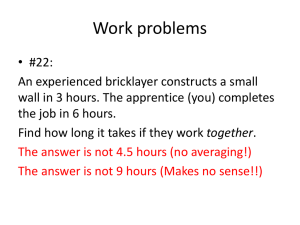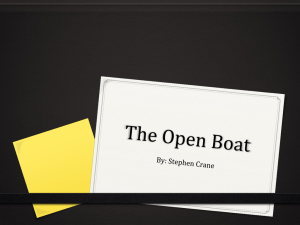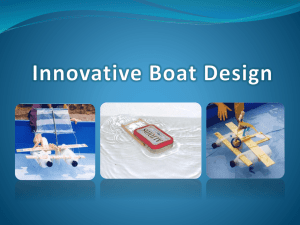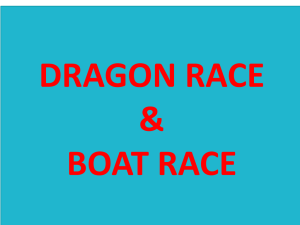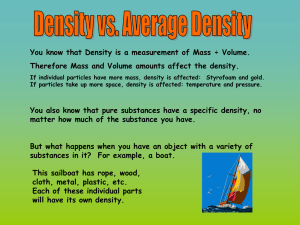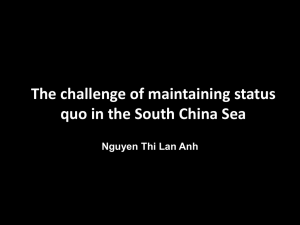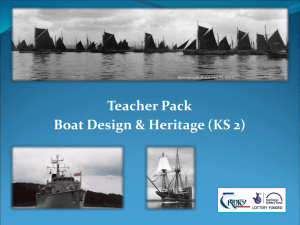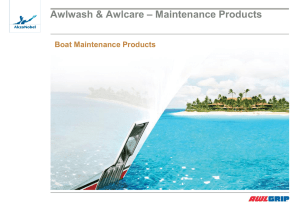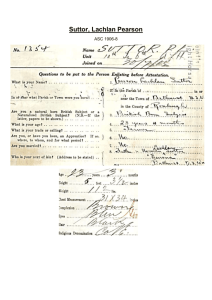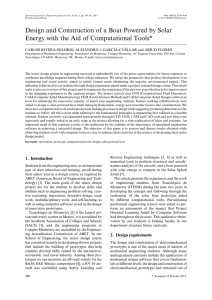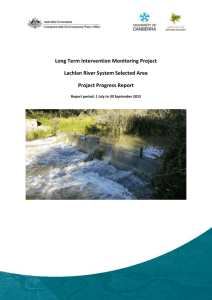Our Solar Boat 3
advertisement
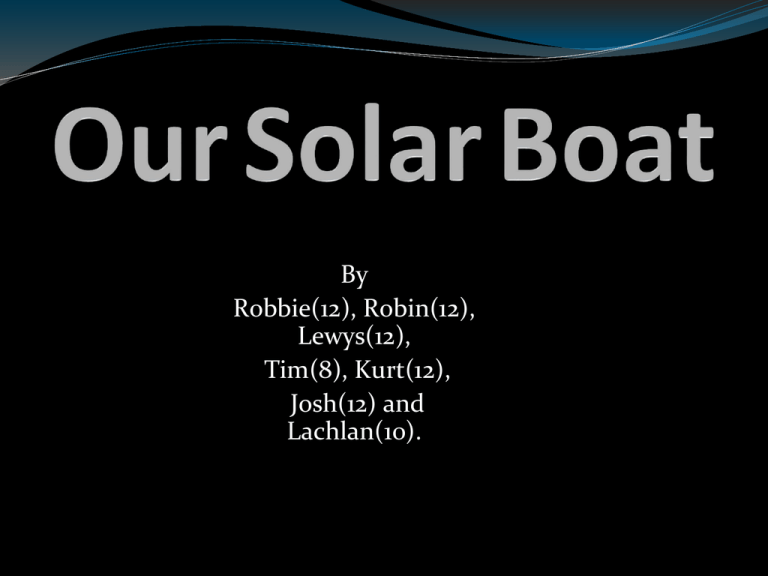
By Robbie(12), Robin(12), Lewys(12), Tim(8), Kurt(12), Josh(12) and Lachlan(10). Tim Robin Lewys Josh Robbie Unfortunately Kurt wasn’t there Lachlan Why did we do this? Last year we went to the competition and thought that we might try it. So this year we’re entering the competition. The Technology Solar Panels Motor Remote control Batteries (only on the receiver and transmitter) A switch Steering servo Receiver Our Sources http://www.delftship.net/ http://www.members.iinet.net.au/~gveale/solar/photosvid eo.htm http://www.plymouth.ac.uk/files/extranet/docs/DSC/Pt2_ Archimedes4Airheads.pdf The Process We went to all three meetings organized by Penrith City Council and learnt lots (and were well fed ). The Design and Electronics tests At our first meeting we discussed the hull and electronics that we will need and those we don’t. On Sunday the 9th of September we tested the electronics on Josh’s pool in a foam box. Tim , Robbie and Josh decided to document our progress in Power Point Some early design ideas Prototype 1 PROTOTYPE 1 was a great success. We built it to test different prop shaft angles. It showed that the least angle is best, but if the prop is just a little out of the water, a lot of power is lost. Prototype 2 Prototype 2 We added a rudder controlled by a servo, and used a wider, higher rimmed base to avoid water spilling in onto the technology. We found out that the wire connecting the rudder and the servo has to be very stiff, so that it does not bend. We need to know how far the signal from the remote reaches. Prototype 3 Prototype 3 Four solar panels were mounted onto a piece of red Perspex. We connected up the solar panels, but still kept the battery, so we could test the boat in low light. We worked out that we needed four more panels to have enough energy to drive the boat in overcast conditions. Lachlan’s Bottle Boat Lachlan’s design drawings for his bottle boats. Lachlan’s Bottle Boat Lachlan’s bottle boat is made of juice bottles, kebab sticks, small water bottles and gaffer tape. It floated well, but did not turn well. It was Prototype # 4. Another idea Tennis ball cylinders float well, too! (Except when the tennis cylinder caps aren’t sealed properly) WHIRL POOL EXPERIMENT We wrapped up the boat in Cling Wrap to protect the technology from water and put the boat in a spa to test its stability. Result: The boat was stable and did not tip over Robbie is taking notes so we can put more information into the slide show. Learning to cut and work the polystyrene Gloss deep base Wattyl stone finish Wattyl Solarguard The Final Control Unit Inside of the control unit, with batteries to try prop position Four solar panels in place for trials Getting closer Attaching hulls to the control unit First trial run It floats well but is too wide. One problem though At the next meeting in Penrith, we found out the boat was too wide! So we shrunk it! and hid the box in the hulls But the box of tricks was great Our wiring diagram, allowing the boat to have more grunt, even in overcast conditions Fine-tuning We wanted the final shape to be hydro-dynamic and shaped like a racing boat Getting the final shape We cut away at the top of the boat, making sure both hulls looked similar Looking good Fairing it The Final Product
